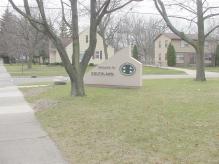
2003
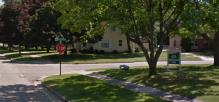
2011

Science in the US and WWII were tightly linked for something like
50 years. Many Godwin students benefited from the nearly five decades
of science education in the US. Find out more by looking at

Scouting was popular at Godwin well in to the 1950s.
Find out more by looking at

The Southlawn district, perhaps bounded by Division Avenue, Jefferson Avenue, 40th Street, and 43 Street, is akin to the "Home Acres," "Burton Heights," and "Godwin Heights" business districts. Anecdotally, the area was much more commercial in the 1920s and 1930s than it is today. Many business establishments, mainly small, family owned grocery stores, often owned by the families of Godwin students, are now long gone.
With the explosive growth of the area in the last 35 years,
and the construction of many new shopping facilities, the advent
of large supermarkets, malls, etc., the old business areas have
mostly lost significance, even while the names still exist.
Left click on the images below for larger versions.

2003 |

2011 |
Another former area institution is the
Southlawn baptist church.
The building still exists, but is apparently no longer houses a church,
although the building does look to be commercial. It's mildly
amusing that it is located across the street from the old Southlawn
theater, since movies were forbidden to parishioners in the 1950s yet,
and theaters were somewhat described as "dens of iniquity."
In its day the church, like many community churches, was a center for
both religious and community activities, and could be counted on to provide
an entertaining evening on Halloween, for example.
The Southlawn barbershop was apparently right by the theater. The theater is variously reported to be at 4000 S. Division Ave. and 4002 S. Division Ave. The ad below, from the December 15, 1933, issue of "The Godwin High School News," lists the barbershop as being at 4000 S. Division Ave. Does anyone remember where the barbershop was located? Was it in the theater?
25 cents for a hair cuts certainly suggests Great Depression era prices.
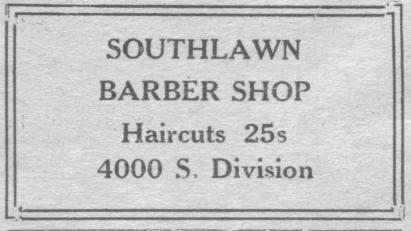
Section "T" contains more information about the Southlawn theater,
which operated at least as far back as 1929 to 1950 or so, when TV
began to take a toll on neighborhood theaters.


It appears that Gladys G. and Charles C. Saur are to Godwin what Martha and George Washington are to the United States. In a span of about 26 years Godwin went from a one room schoolhouse when Charles Saur arrived in September, 1924, to a multi-building complex when he left in 1950. Within ten years of his departure, two more ( West Godwin was constructed in 1949 ) elementary schools, were added, and a large physical education (gym) building. It's quite possible that he was instrumental in getting the General Motors Fisher Body plant to locate on 36th Street, thus providing the tax base for the development of Godwin. Charles Saur lived to be 96, and died December 9, 1997. Gladys Saur lived to be 96, and died Sunday, June 24, 2001. Between them, active in Godwin affairs to the end, attending many class reunions and other functions, they had witnessed and participated in almost the entire development of the Godwin School system in the 20th century, and were in large measure responsible for guiding its development during a crucial quarter century.
Left click on the image above for more on the Saur's.
Left click on the images below for larger versions.
Material provide by John Kamstra, a local collector.
In addition to all of her other duties, Gladys Saur made time to
send letters to the parents of each student that excelled in their
school work. Each letter reaffirms the importance of home and school
influence on a student's performance, and the letter at the right makes
it clear why a student's development is importance to the functioning of
a democracy. Community involvement was a strong factor in the success of
Godwin, or any school, fifty years ago. It was a feature of local schools
that is not doing well in an era of school consolidation, and the
anonymity and relative lack of supervision that it can produce.
Greenwood cemetery, Sparta, MI.


Thacher's Calculating Instrument.
A cylindrical, rotating slide rule. Designed by Edwin Thacher in the late 1870s, and marketed by K+E as the model 4012. An engraving mistake on early pre-K+E instruments mis-spells the name as Thatcher. The rosewood box behind the instrument came with it.
The 18 inch scales have two portions, one external segmented cylinder that rotates, and a movable internal cylinder that also rotates. The scales achieve very high accuracy due to their equivalent length of 30 feet. This permits answers to 4 or sometimes 5 decimal places, which is extraordinary. Operations are multiplication, division, squares and square roots.
This slide rule was a working instrument in the mid 1930s, and then became the property of algebra teacher Hilda MacGregor, who often displayed it in her math class room. The use of slide rules was still part of the math curriculum into the 1960s.
Today a five dollar calculator from K-Mart is vastly superior to a slide rule in every practical way. But in their day slide rules were a standard part of every engineer's tool kit, and many designs were completed with their aid.

On May 16, 1968, a tribute was held for Mrs. Anne Sullivan, or Mrs. Sullivan as many decades of Godwin students remember her. An institution at Godwin dating back to 1932, she was the kind of person one could always depend on. In addition to treating aches and pains, she was always there to promote one of life's more noble professions, and encouraged many many of Godwin's graduates to consider nursing. One of her own daughters became a nurse.
In Mrs. Sullivan's time at Godwin there were many major advances in medicine, including polio vaccine, and effective antibiotics. Godwin participated in screening programs for things like TB. All this, plus gym classes, playgrounds, and a student population that largely walked or rode bikes to and from school, made a healthy environment.
The program for the tribute was made available by Joanne (Dulyea) Hamilton, class of 1951, who also points out that five generations of Dulyea's attended Godwin. The last was a great granddaughter, who briefly attended North Godwin.
Left click on the image above to view the 1968
tribute to long time school nurse Anne Sullivan.
Left click on the images below for larger versions.

|
Left click on the images below for larger versions.
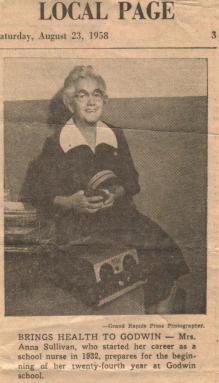
|

|

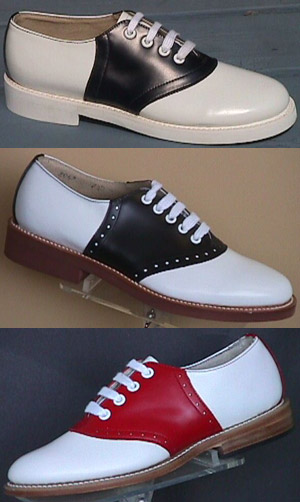
Saddle shoes were introduced in 1906 as sportware for the rich and wonderful. They were worn for games like tennis and golf. Some time in the late 1930s and early 1940s they made a transition to a fashionable shoe for everyday wear, and started showing up on Godwin students in and around 1940. See the bottom photograph on page 31 of the 1940 annual where two pair of saddle shoes appear. As the image above shoes, the saddle came in colors other than black.
Like "penny loafers," saddle shoes were worn by both males and females. In the 1950s, and maybe earlier, a standard outfit for women was a pink sweater, gray skirt, and shoes. Probably most people had such an outfit. To see just how pervasive the fad was, see pages 48 and 49 from the 1955 annual, and notice the footware. The fad had a long run, but by the early 1960s it was essentiall spent, as newer, more temporary fads came along.

A significant tornado hit the Standale, MI, area on April 3, 1956. A number of homes were either demolished or badly damaged. Still a relatively undeveloped area in 1956 yet, the damage was mostly confined to farm houses, trees, cars, etc.
One can see some of the aftermath of the tornado in the photographs below:
Material provided for scanning by Lillian Annis, class of 1941.

Were you a jock? Jockette? Manager? Twirler? Marcher? Custodian? A dweeb who studied a lot? There was a school letter for you. Just get a dark blue sweater or a school jacket, and soon you could be G-whiz. A walking billboard for Godwin. A virtual mobile advertisement for your activities while at Godwin.
See below for a look at an assortment of awards available at Godwin in the late 1950s. Oh, forget the dweeb letter. If you studied a lot, well, virtue is its own reward. You probably didn't get out much anyway.
Left click on the images below for larger versions.
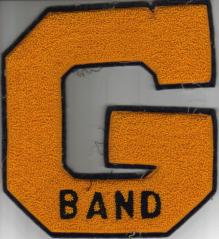
|
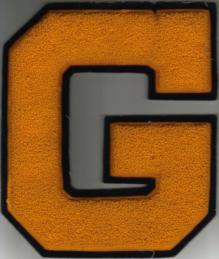
|
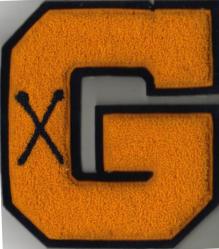
|
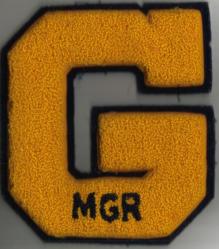
|

|
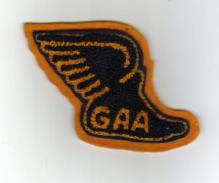
|
Material provide by Polly Goeman, class of 1959, and Delores Esakson, class of 1962.
Shop classes at Godwin were in part preparation for daily life after graduation, and also preparation for employment. The three major areas of shop at Godwin were automechanics, metal working, including welding, and woodworking. All fell in to the category "industrial arts," and meant just that - the art and practice of work areas of interest to industry. In the 1950s that would have included companies like GM, Steelcase, and Kelvinator, names mostly gone in year 2011. In each area, a level of proficiency adequate for employment in the areas of auto repair, metal fabrication, and machinery of all kinds.
Some photos taken in the woodworking shop area around 1960 students in the process of building various items. The purpose of the photos might or might not have had to do with a state woodworking project upcoming at the time. It's not even certain all the photos were taken the same year - students from the classes of 1960 to 1965 are represented. So the photos could have to do with routine documentation around the school. The photos were found in one of the Godwin elementary schools, and provided for scanning by Bob Ferguson, class of 1955. Who took them, and what they were doing at the place they were found is probably lost to history, but they are the kind of photographs that were probably taken by the thousands by J. B. Ward and others. Almost all have either been disposed of, lost, or given to various individuals, and are now residing for the time being in various basements and attics.
The names are not complete. If you recognize someone that is not already named, or is named incorrectly, please notify me.
Left click on the images below for larger versions.
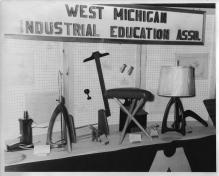
|
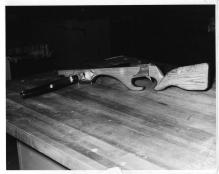
|

|

|
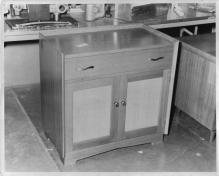
|
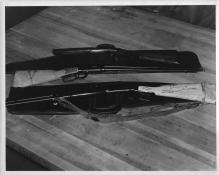
|
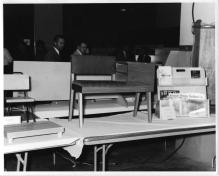
|

|

|
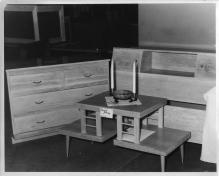
|

